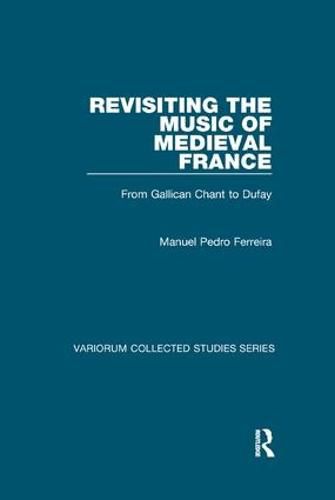Readings Newsletter
Become a Readings Member to make your shopping experience even easier.
Sign in or sign up for free!
You’re not far away from qualifying for FREE standard shipping within Australia
You’ve qualified for FREE standard shipping within Australia
The cart is loading…






This book presents together a number of path-breaking essays on different aspects of medieval music in France written by Manuel Pedro Ferreira, who is well known for his work on the medieval cantigas and Iberian liturgical sources. The first essay is a tour-de-force of detective work: an odd E-flat in two 16th-century antiphoners leads to the identification of a Gregorian responsory as a Gallican version of a seventh-century Hispanic melody. The second rediscovers a long-forgotten hypothesis concerning the microtonal character of some French 11th-century neumes. In the paper Is it polyphony? an even riskier hypothesis is arrived at: Do the origins of Aquitanian free organum lie on the instrumental accompaniment of newly composed devotional versus? The Cistercian attitude towards polyphonic singing, mirrored in musical sources kept in peripheral nunneries, is the subject of the following essay. The intellectual and sociological nature of the Parisian motet is the central concern of the following two essays, which, after a survey of concepts of temporality in the trouvere and polyphonic repertories, establish it as the conceptual foundation of subsequent European schools of composition. It is possible then to assess the real originality of Philippe de Vitry and his Ars nova, which is dealt with in the following chapter. A century later, the role of Guillaume Dufay in establishing a chord-based alternative to contrapuntal writing is laboriously put into evidence. Finally, an informative synthesis is offered concerning the mathematical underpinnings of musical composition in the Middle Ages.
$9.00 standard shipping within Australia
FREE standard shipping within Australia for orders over $100.00
Express & International shipping calculated at checkout
This book presents together a number of path-breaking essays on different aspects of medieval music in France written by Manuel Pedro Ferreira, who is well known for his work on the medieval cantigas and Iberian liturgical sources. The first essay is a tour-de-force of detective work: an odd E-flat in two 16th-century antiphoners leads to the identification of a Gregorian responsory as a Gallican version of a seventh-century Hispanic melody. The second rediscovers a long-forgotten hypothesis concerning the microtonal character of some French 11th-century neumes. In the paper Is it polyphony? an even riskier hypothesis is arrived at: Do the origins of Aquitanian free organum lie on the instrumental accompaniment of newly composed devotional versus? The Cistercian attitude towards polyphonic singing, mirrored in musical sources kept in peripheral nunneries, is the subject of the following essay. The intellectual and sociological nature of the Parisian motet is the central concern of the following two essays, which, after a survey of concepts of temporality in the trouvere and polyphonic repertories, establish it as the conceptual foundation of subsequent European schools of composition. It is possible then to assess the real originality of Philippe de Vitry and his Ars nova, which is dealt with in the following chapter. A century later, the role of Guillaume Dufay in establishing a chord-based alternative to contrapuntal writing is laboriously put into evidence. Finally, an informative synthesis is offered concerning the mathematical underpinnings of musical composition in the Middle Ages.